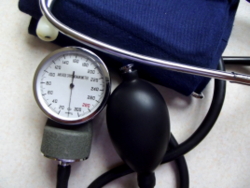American researchers have concluded that older people who follow a Mediterranean diet (typically characterised by a high intake of fish, fruit, vegetables, legumes, cereals and unsaturated fat, a low intake of dairy and meat, and a moderate intake of alcohol), are less likely to develop mild cognitive impairment (MCI), and less likely to progress from MCI to Alzheimer’s disease (AD).
Data from 1393 cognitively normal individuals, and 484 individuals with MCI, overall average age 77, was analysed for the study, and participants were followed for an average of over 4 years.
Over that period, 275 of the initially cognitively normal people, developed MCI. Compared to those people with only a low adherance to a Mediterranean diet, those with the highest adherance, had though, a 28% lower risk of doing so. Even those with a moderate adherance showed a 17% lower risk.
Over a similar period, 106 of the 484 individuals with MCI went on to develop AD. Again compared to those with only a low dietary adherance, people with the highest adherance showed a 48% lower risk of progressing from MCI to AD. Those with a moderate adherance showed a 45% lower risk.
(Mediterranean Diet and Mild Cognitive Impairment. JAMA Neurology, February 2009.)


